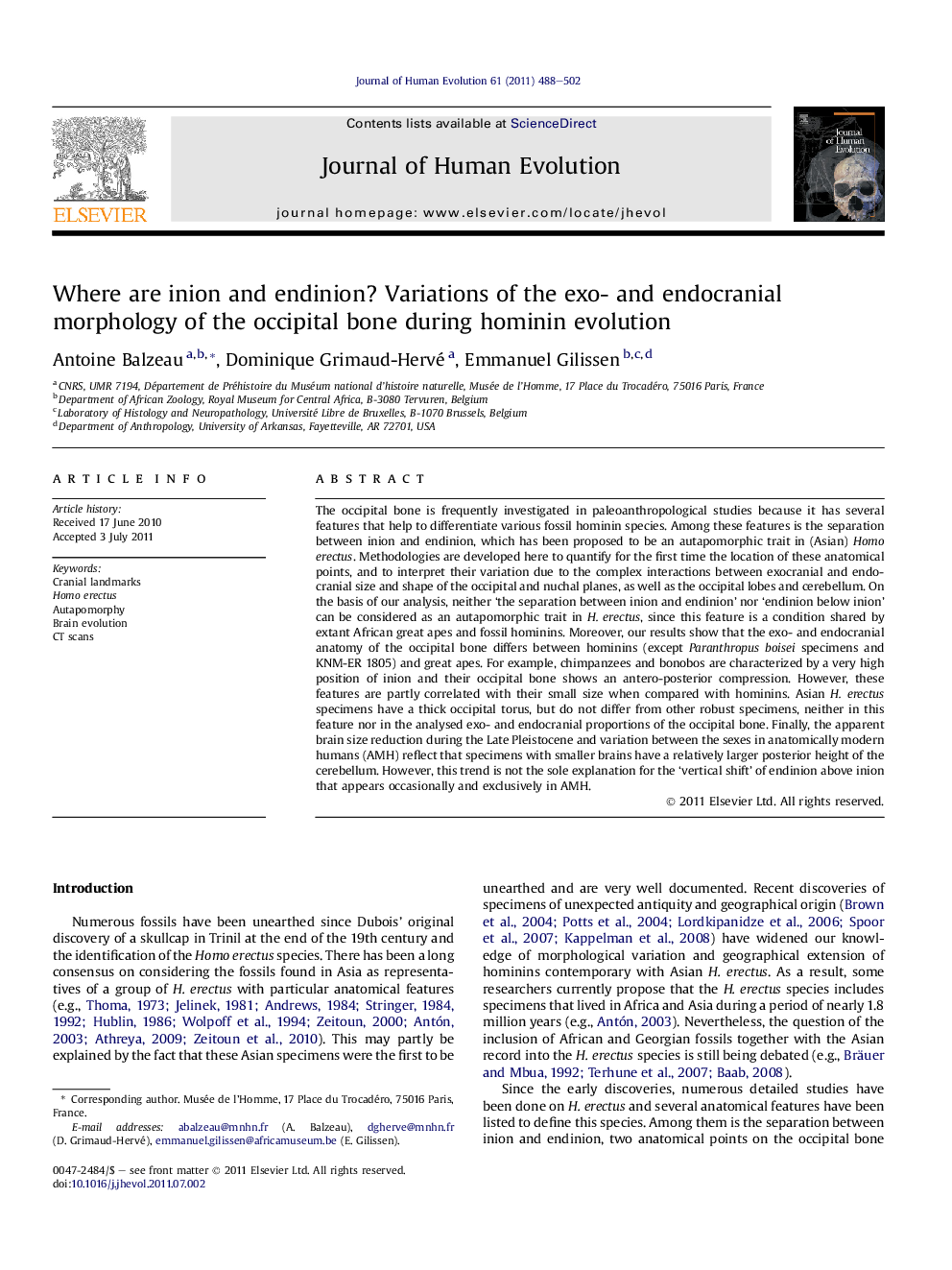| کد مقاله | کد نشریه | سال انتشار | مقاله انگلیسی | نسخه تمام متن |
|---|---|---|---|---|
| 4556399 | 1329475 | 2011 | 15 صفحه PDF | دانلود رایگان |
عنوان انگلیسی مقاله ISI
Where are inion and endinion? Variations of the exo- and endocranial morphology of the occipital bone during hominin evolution
دانلود مقاله + سفارش ترجمه
دانلود مقاله ISI انگلیسی
رایگان برای ایرانیان
موضوعات مرتبط
علوم زیستی و بیوفناوری
علوم کشاورزی و بیولوژیک
بوم شناسی، تکامل، رفتار و سامانه شناسی
پیش نمایش صفحه اول مقاله

چکیده انگلیسی
The occipital bone is frequently investigated in paleoanthropological studies because it has several features that help to differentiate various fossil hominin species. Among these features is the separation between inion and endinion, which has been proposed to be an autapomorphic trait in (Asian) Homo erectus. Methodologies are developed here to quantify for the first time the location of these anatomical points, and to interpret their variation due to the complex interactions between exocranial and endocranial size and shape of the occipital and nuchal planes, as well as the occipital lobes and cerebellum. On the basis of our analysis, neither 'the separation between inion and endinion' nor 'endinion below inion' can be considered as an autapomorphic trait in H. erectus, since this feature is a condition shared by extant African great apes and fossil hominins. Moreover, our results show that the exo- and endocranial anatomy of the occipital bone differs between hominins (except Paranthropus boisei specimens and KNM-ER 1805) and great apes. For example, chimpanzees and bonobos are characterized by a very high position of inion and their occipital bone shows an antero-posterior compression. However, these features are partly correlated with their small size when compared with hominins. Asian H. erectus specimens have a thick occipital torus, but do not differ from other robust specimens, neither in this feature nor in the analysed exo- and endocranial proportions of the occipital bone. Finally, the apparent brain size reduction during the Late Pleistocene and variation between the sexes in anatomically modern humans (AMH) reflect that specimens with smaller brains have a relatively larger posterior height of the cerebellum. However, this trend is not the sole explanation for the 'vertical shift' of endinion above inion that appears occasionally and exclusively in AMH.
ناشر
Database: Elsevier - ScienceDirect (ساینس دایرکت)
Journal: Journal of Human Evolution - Volume 61, Issue 4, October 2011, Pages 488-502
Journal: Journal of Human Evolution - Volume 61, Issue 4, October 2011, Pages 488-502
نویسندگان
Antoine Balzeau, Dominique Grimaud-Hervé, Emmanuel Gilissen,